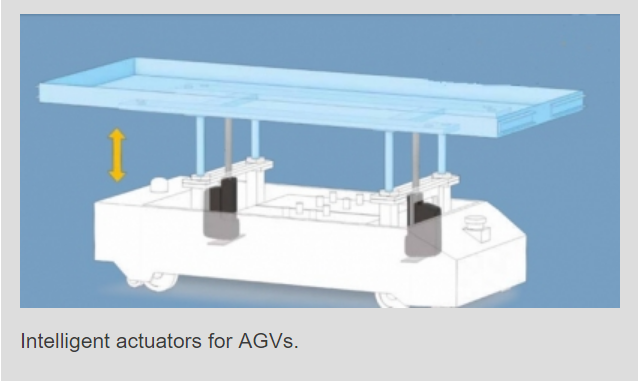Welcome to Sino Bearings web
24x7 HOTLINE:+86-28-81454188

 NEWS
NEWS
Automated guided vehicles (AGVs) can improve industrial productivity by 50 to 70 percent but require adequate room to move about increasingly space-constrained factory floors. The more functionality AGV designers can pack into a small footprint, the greater will be the value to the end-user. Choosing the right actuation technology is critical to that value, and AGV designers are increasingly choosing smart electromechanical actuators when seeking high-performance motion control in a small footprint.
AGVs on the factory floor
In manufacturing applications, AGVs (Figure1) replace much of the human lifting and carrying involved in functions such as delivering blanks to the production line and in transferring goods throughout the workshop, warehouse and assembly line. Most AGVs today are guided by laser or magnetic strips, some use cables and fixed tracks, and more and more are communicating wirelessly.
In a typical manufacturing application, a machine operator would signal the need for parts on a logistics management computer system via call terminal at their workstation. On receipt of the request, the management system forwards the request to the AGV management software, which dispatches the nearest vehicle to the task based on priority and optimal pickup and delivery motion. After the operator completes the job, they signal the control system to proceed to the next step in the process.
The host computer always knows the state, position, speed, direction, fault and power of the AGV, and moves it forward, backward, left and right. When encountering an obstacle, the AGV automatically decelerates and stops to avoid a collision. When the obstacle is removed, the AGV operation automatically resumes.
The need for intelligence
As AGV use increases, so does interest in integrating movement with advanced software applications, including enterprise resource planning systems, automatic storage systems, modular conveyor systems and asset management software. Such software guides the creation of optimal workflows for moving materials or functionality from one part of a facility to another with minimal human involvement and effort.
Connectivity is managed by onboard microprocessors and software in modern AGVs and to take the fullest advantage of the potential of digital communications, designers are also deploying smart actuators that have built-in intelligence as well. This enables integration with AGV automation schemes and communications among actuators themselves. The ability to synchronise actuators with each other, for example, could enable creation of an AGV lift table.